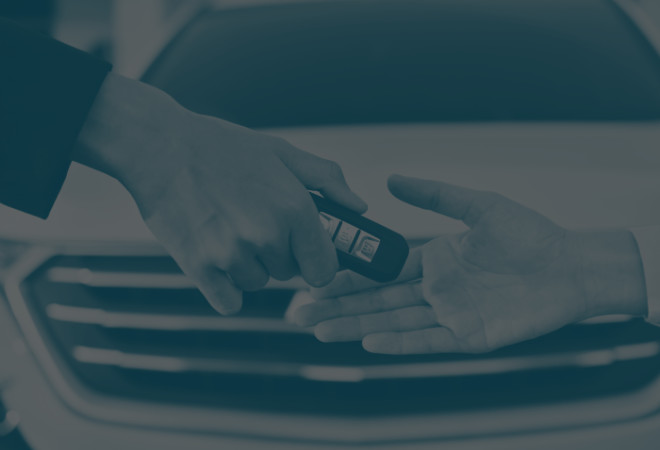From cars to COVID to cookies, guest speakers Alex Holt (Cars.com) and Marc Castañe (Autoscount24) speak with Adverity’s Marija Traut about how the world of digital marketing in the automotive industry is changing.
For many industries, there have been big changes in the past year and a half and the automotive industry is no different. While the pandemic meant that marketing teams needed to pivot rapidly as consumers were no longer able to visit car dealerships, data deprecation and privacy laws are also impacting how digital marketers operate.
In our recent webinar, Adverity’s Marija Traut spoke with Alex Holt, Director of Digital Advertising at FUEL IMV (Cars.com), and Marc Castañe, Digital Marketing Team Lead at Autoscout24 on the current climate for automotive markers and the role data is playing.
Cars and COVID
With lockdowns suddenly preventing consumers from visiting dealerships in person, car purchasing behaviors changed overnight for the automotive industry. “Prior to covid we had pretty robust models of how our customers thought and what our levers were,” says Alex Holt, “but after 2020 those models became a lot less predictable and the speed with which you could change that model was not in line with the speed the market was changing.”
While the industry has been adapting to digital for some time now and online automotive marketplaces like cars.com and Autoscout24 growing quickly prior to the pandemic, mandated lockdowns meant that this process suddenly accelerated. What should have happened in 10 years happened in 1 year,” says Marc Castañe. “On the one hand that is very challenging but on the other, it is very exciting!”
“It’s been a total rollercoaster!” agrees Alex Holt, “What we found is that instead of a financial problem we had a product problem – we needed to pivot the product around the new buying behavior.”
Let’s not forget third-party cookies!
At the same time to COVID-19 rapidly changing how the industry operated, Alex Holt notes that new privacy and third-party cookie deprecation announcements from the likes of Google and Facebook were another key factor that has put pressure on the industry. “We have had to shift from volume marketing to user-centric marketing,” he says, “More and more you don’t have the budget or the information to allow your funnel to produce waste. You can’t just blast out a ton of prospecting and then retarget all those users again and again – in the past year and a half, the money is much more scrutinized so you cannot spend so recklessly.”
So, according to Alex Holt, on the flip side of how the pandemic changed consumer behaviors becomes the question of ‘Who do I target?’ For Holt, it is no longer a case of being merely analytical metric marketers. Instead, businesses need to partner with the consumer and help them at a personal level based on what they need.
“We have a lot of projects focusing on personalization and getting more targeted,” says Marc Castañe, “Previously we wanted to get as many leads as possible - but this is not optimal. Now we want to really focus on what is valuable for the consumer.”
And the automotive industry is not alone in this thinking. Recently, Principal Analyst at Forrester, Tina Moffet, has similarly advised marketers to go back to the basics of building a customer-first strategy and adapting their practices around transparency and choice, value to the customer, and relationship depth.
The right data to the right people at the right time
For many industries, the pandemic revealed how crucial data was to understand their rapidly changing customers’ behavior. “We are very data-driven but after COVID, we are obsessed with data,” says Marc Castañe, “Data is everywhere and getting more complex but at the same time we are getting better and better at using it to answer complex questions”.
The need for getting actionable insights accelerated believes Alex Holt. “How do we form customer insights quickly that actually have value instead of just sounding interesting?”, he says, “this has become an immediate need. Speed to impact has changed really dramatically.”
At the same time, remote working placed additional pressure on teams to ensure that the right people were getting the right data at the right time. “From an operational standpoint,” says Holt, “a key challenge was making sure that everyone gets access to the data they need.
According to Marc Castañe, the first lesson they have learned is the need to keep investing in people. “People are the ones moving the business forward and overcoming the challenges of the past year,” he says. However, at the same time, the right technology is needed to ensure staff have the access to the data they need. “My tagline has become ‘find everything that a human doesn’t need to do and get a robot to do it’ - free up the human to do the things only humans can do’,” says Alex Holt, “and being agile with how we are using and sharing data is crucial to enabling those people.”
What are the key takeaways from the past year?
"First; keep our vision at the top of our priorities, second; entrust and empower your people, and third; always challenge the status quo," says Marc Castañe, “In the future, businesses are going to need to learn to embrace change – change is everywhere and, in every change, there is an opportunity.”
“The charge that we have given ourselves is,” says Alex Holt, “How do we, with the breadth of information we have and knowing that the consumer is more informed than ever, do you create a magical car shopping experience for people – and the answer is personalization and being value-centric. The process is no longer just transactional. The question needs to be; How do you create a user-centric system?”











